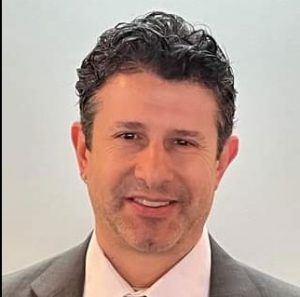By Amanda Olsen
Commack Union Free School District residents will vote on the 2022-23 budget and select two school board trustees when they head to the polls Tuesday, May 17.
The budget for next year is nearly $215 million, an increase of 4.64% over last year. This will result in a tax levy increase of 1.95%, under the tax cap of 3.82%. This includes a state aid package of $43 million.
With the adoption of this budget, the average class size will remain the same or lower at all levels. Phonological, fine motor and writing skills support will be available for all kindergarten students. The new International Baccalaureate career-related program provides relevant learning opportunities for the students’ chosen college or career path. Select music groups will now begin at the intermediate level and continue through the middle and high school levels. It includes enhanced robotic and computer programming enrichment classes at Commack Middle School, opportunities at various clubs, lunch and learn, arts-in-education programs, intramurals, music, honor societies and athletics. There will be an increase in college-level courses with college credit-earning opportunities in all subjects. It also provides for districtwide infrastructure, including additional cyber-security reviews and improvements.
Voters will also vote on a second proposition which would allow the board of ed to decrease the current transportation limits in grades 3-5 from 1/2 mile to 1/4 mile. If approved, the proposition would not increase the transportation budget.
Candidates
Steven Hartman provided written answers, and Pauline Fidalgo said she was not doing interviews. All other candidates did not respond to requests to be interviewed. Therefore, the majority of candidate information and quotes have been taken from the district’s website.
 Pauline Fidalgo
Pauline Fidalgo
Fidalgo has been a Commack resident for 21 years. She has one child currently attending in the district and another who recently graduated. She is currently a legal assistant.
According to her candidate profile, she wants to join the school board to support parents and bring unity to the community.
“A member of the board of education’s role is to provide support and leadership for the parents and students in the community, ensure that we are fiscally responsible, and provide programs that will allow students to be successful adults,” Fidalgo said.
She was directly involved in her children’s classrooms and has been attending school board meetings both in person and virtually.
“I think my strengths are that I am open to listening to other points of view and respectful of others,” she said.
If elected, Fidalgo is eager to get started. She plans “to learn as much as I can about how things are currently being done so I can support in the areas where the district is successful. Hopefully, I can bring a fresh perspective and work with the other board members to see where things can be improved.”
She intends to increase transparency in the classroom with regard to lessons and required texts: “My suggestion would be for teachers in the secondary level to provide a syllabus at the start of each course and all teachers provide a list of books that will be read in the classroom each year. This will allow for transparency between the classroom and parents.”
 Steven Hartman
Steven Hartman
Steven Hartman has been a Commack resident for 25 years and has two children who recently graduated from the district. He is the engagement director of a medical device design firm.
Hartman has been on the board of the Commack school district for nine years and has been president of the board for the past seven years. He has been on the PTA for 18 years, and is president of the board of trustees for the Commack Public Library where he has served for 17 years.
According to his candidate profile, Hartman brings a commitment to advocacy and fiscal responsibility to the board. “I do not represent any one community-based group as I represent the entire community,” he said. “I have a great understanding as a board member of the roles and responsibilities of a board member including fiscal governance of the district, which is one of the key foundations of a board member. … I want to continue to explore new ways to grow and enhance all our programs so that every student benefits. I have been an advocate for education and will continue to do so. We need to work with our elected officials to continually let them know what makes Commack such an outstanding district and how they can help ensure that we maintain this level of growth.”
If reelected, Hartman plans to continue supporting the board’s stated goals: “I will continue reviewing and providing feedback to the administration on multi-year financial plan that focuses on fiscal stability.” In addition, “I will work with my board for the continuation of increased growth of new programs for levels K-12. … We want to ensure that all students get a valued education that will make them ready for a career or college after they leave our district.”
When reached for comment, Hartman emphasized the success the board has had in improving the overall outcomes for students. In particular, he pointed out some of the recent accolades the district has been awarded, including the Blue Ribbon award, which recognizes outstanding schools nationally.
“We achieved the Blue Ribbon distinction award this year in the high school,” he said. “This award is a testament to the hard work and dedication of our students and everyone who has supported and contributed to Commack schools over the years. Our program focuses on high-level, project-based academics, creativity, communication, movement, music, art, business, mathematics, humanities, science, engineering, and technical and trade opportunities. This initiative has resulted in unmatched 98% of all graduates taking at least one college level class and an astounding 85% taking three.”
His plan going forward is a renewed commitment to improving communication with the community.
“We have enhanced our communication with the ‘Be in the Know’ weekly update,” he said. “We are providing the community with valuable information from the board about our schools and all the great exciting programs that are ongoing in our district. We launched a Facebook site as well to provide happenings in our schools.”
 Chris Jurkovic
Chris Jurkovic
A 10-year Commack resident, Chris Jurkovic has a 6-year-old son in the school system and a 2-year-old daughter. He has worked as a contractor in the HVAC industry for the last 19 years.
Jurkovic is seeking a position on the board in order to unite the community, parents and teachers, and he said to do what is best for the children.
“I offer a unique opportunity to diversify the board’s perspective, as well as represent many parents with young kids and community members who share my blue-collar background,” he said.
Enhancing communication is high on Jurkovic’s list of priorities: “The board should always seek new ways to get parents and the community involved as they are the taxpayers who fund the great programs Commack schools offer. For example, we could look to bring back the parent committees at the elementary school level.”
He also plans to encourage the schools to explore alternate post-school training opportunities. “Commack schools have had great success in preparing our students for prestigious universities,” he said. “I would like to broaden this focus to include more emphasis on the wonderful skill-specific training programs we have to offer such as trade schools and other alternative higher education opportunities. Parents and students should be more aware of the high-paying careers available to them at a smaller financial burden and be able to work with the schools in conducting a cost-benefit analysis before making a life-changing decision.”
 Justin Varughese
Justin Varughese
Justin Varughese has lived in Commack for 16 years and has two children in the district. He is a founding partner and senior trial attorney at his firm, Leitner Varughese Warywoda. He has served as a board trustee for two years and board vice president for one year and was involved with PTAs at North Ridge Primary, Burr Intermediate and Commack Middle schools.
Varughese said he has a strong commitment to his community and schools.
“Though times are seemingly more divisive than ever, I believe we serve our children well when we model this ability to learn from one another and grow together, even if we don’t always agree perfectly,” he said. “As a business owner, I also have the skills to cultivate budgetary accountability and effective contract negotiations in the best interests of the district and community.”
His plans for the district include supporting students to find their strengths. “We want to develop world changers who are thriving in their strengths and passions, so we must help students discover their path with intentionality and focus,” he said.
He also hopes to help them acclimate to a postpandemic academic environment. “We now have an opportunity … to foster a uniquely healthy school environment that surpasses what it had been in years past,” he said. “It will come about through increased student engagement, professional development and an array of other purposeful approaches. The intended result will be a student body marked by confidence, engagement and social/emotional health.”
It is also important to Varughese to help students relate to those who are different from them. “I hope to continue to work with administrators and teachers to explore how we can increase students’ exposure to diverse perspectives so as to produce generous, gracious attitudes toward others,” he said.
Voting information
Residents of the district can cast their votes May 17 from 6 a.m. to 9 p.m. at Commack Middle School and Commack High School.








 Michael Saidens
Michael Saidens Michael Catalanotto
Michael Catalanotto Charles Fisher
Charles Fisher Angela Kouvel
Angela Kouvel





































